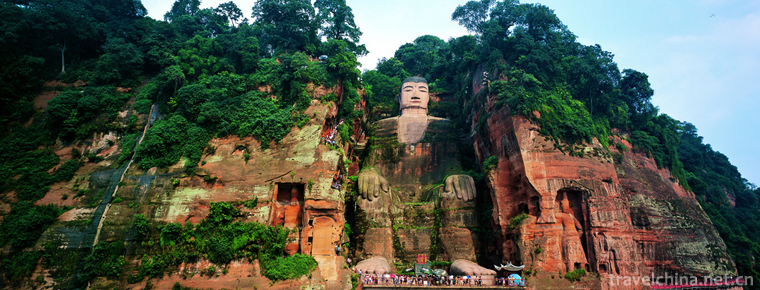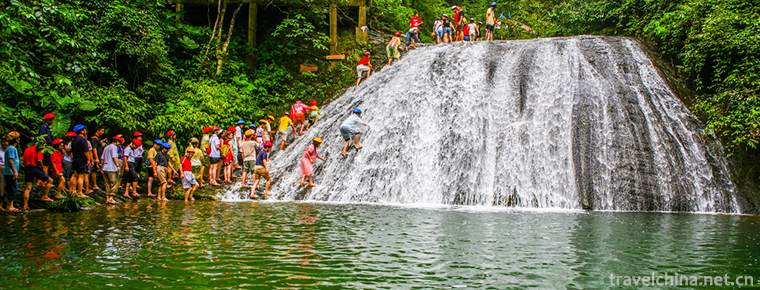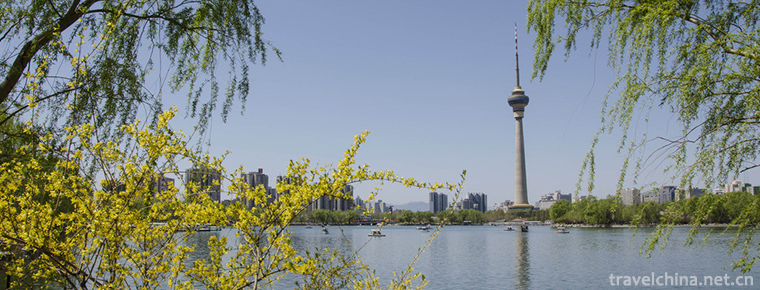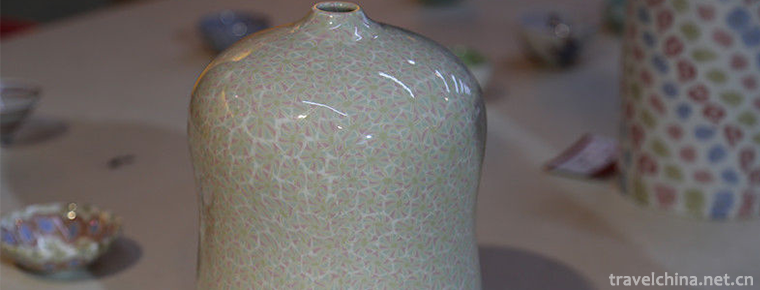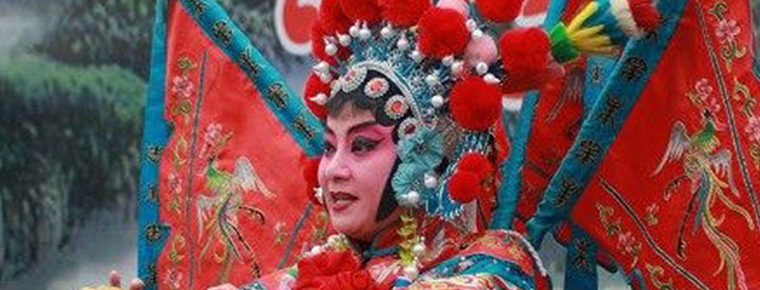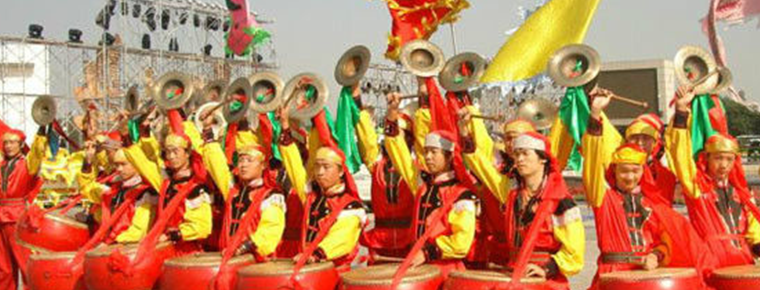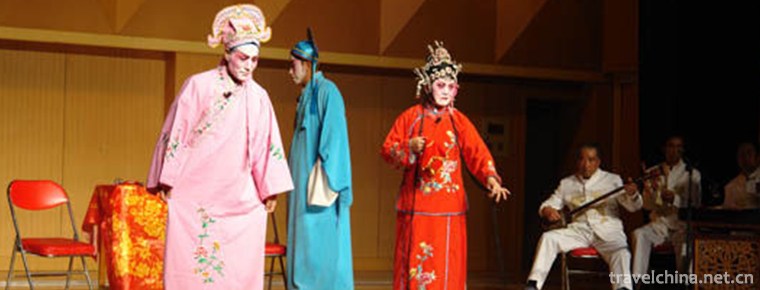Tibetan folk songs
Tibetan folk songs
Tibetan folk song is a magnificent flower in Tibetan folk literature, with profound ideological and high artistic quality. Throughout the development process of Tibetan folk songs, we can see the basic general situation of Tibetan ethnic social history, era life, customs and customs, as well as the evolution of culture and art. As a national form of oral literature, Tibetan characters had been widely circulated among the masses before they appeared. The emergence and use of Tibetan not only promoted the progress of Tibetan society and cultural development, but also enriched and developed folk songs, which were fully used by literati. From the Tibetan literature found, the ancient Tibetan people used folk songs as a way of expression.
On June 7, 2008, Tibetan folk songs were approved by the State Council to be included in the second batch of national intangible cultural heritage lists.
historical origin
Some experts believe that as early as before the emergence of Tibetan characters, folk songs, as oral literature, have been widely circulated among the masses. After the emergence and application of Tibetan, it not only promoted the progress and cultural development of Tibetan society, but also enriched and developed folk songs by the full use of literati.
The lyrics and music of Tibetan folk songs have not been handed down in words before. They are all memorized and oral by folk artists and passed on to their descendants through singing. The tunes are generally unchanged, and the original Tibetan folk songs are not accompanied by music. The lyrics of Tibetan folk songs are both old and new. They are often sung in old tunes with new lyrics. The lyrics are very deified.
Tibetan folk song (Tibetan called "Le", "Danre" in Dibu Tibetan, meaning "praise") is a form of singing that is popular among farmers and herdsmen, suitable for both men and women, old and young. Whether it's a festival or a harvest festival, whether it's a family break or field work, it can't be separated from the accompaniment of songs.
Settlements
Tibetans mainly live in Tibet Autonomous Region, Haibei, Huangnan, Guoluo, Yushu and other Tibetan Autonomous Prefectures in Qinghai Province, Haixi Mongolian, Tibetan Autonomous Prefecture, Gannan Tibetan Autonomous Prefecture in Gansu Province and Tianzhu Tibetan Autonomous County, Aba Tibetan and Qiang Autonomous Prefecture in Sichuan Province, Ganzi Tibetan Autonomous Prefecture and Mutu Tibetan Autonomous Prefecture, as well as Diqing Tibetan Autonomous Prefecture in Yunnan Province. Tibetans call themselves "Boba", which means agricultural people. They are an agricultural tribe originating from the Yarlung Zangbo River Basin at the earliest time. The Han Dynasty belonged to a branch of the Western Qiang people. Zampson Zangganbu established the dynasty in the 7th century. The Tang and Song Dynasties called it "Tubo". It was not until the reign of Kangxi that it was called "Tibet". The Tibetan appellation came from it. Tibetans have their own language and writing. Tibetan belongs to the Tibetan branch of the Tibetan-Burmese Language Group of the Sino-Tibetan Language Family. It is divided into three dialects: Tibetan, Kangfang and Anduo. Current Tibetan is a phonetic alphabet based on ancient Sanskrit and Western scripts in the early 7th century. From the 10th century to the 16th century, Tibetan culture flourished.
Tibetan Folk Song
Tibet is known as the "Sea of Song and Dance". Tibetan people are good at singing and dancing. Every holiday, no matter where you go, you can see young men and women, old people and children, holding hands, kicking legs and dancing. During the autumn harvest season, farmers work, sing and dance in circles. In pastoral areas, there are often funny spring fire parties. People stay up all night, dancing and singing, and there is no end. In cities and towns, as long as the weather is slightly warmer, people come out to Linkari to drink highland barley wine and dance folk dances, from morning to night, and return to their homes with joy... In Tibet, "singing and dancing" is not just a concept of stage performance, but a popular hobby and entertainment. Tibet is indeed a "sea of songs and dances". It can be said that Tibet "everyone can dance at home".
After a long historical development and its own evolution, Tibetan folk songs still have the characteristics of recitation, singing and accompanying dance. Therefore, when people talk about folk songs, they are easily involved in music and dance, which is normal. But some people often confuse folk songs with music and dance concepts. In fact, Tibetan folk songs are quite different from music and dance.
Tibetans are a people who can sing and dance well. Every festival, marriage, building houses and other festive days and agricultural and animal husbandry work, often accompanied by a variety of forms, unique mood, rich content of folk music and art. In the long-term historical development, through melting, processing and innovation, it gradually formed its unique folk art and became a wonderful flower in Tibetan art.
Ideological content
The profound and rich ideological content of Tibetan folk songs is expressed through excellent and outstanding artistic forms, and the popularity, extensiveness and high ideological quality of Tibetan folk songs are the important factors that make its artistic quality constantly perfect.
Compared with other folk literature styles, folk songs have more characteristics of working people. From Tibetan folk songs, we can hear the Tibetan people's inner voice. We can see the people's ideological opinions and political attitudes on social politics, economy and war. We can also understand their way of life, customs and basic aspirations and requirements.
In Tibetan folk songs, it also reflects the people's spirit of resistance to reactionary rule, and the people's criticism and strong resistance to social ugliness. Tibet is a feudal serf society with a long history of integration of politics and religion. Religion has steadily occupied Tibet's dominant position for five or six hundred years. However, in the practice of production, labor and life, the Tibetan people gradually saw through the hypocrisy and fraud of religion and the ferocious face of the living Buddha of the dignified monks in religious clothing. Therefore, they used ballads to expose and criticize the anaesthetic and poisonous effects of religion on the people by the ruling class. Although the number of such folk songs is small, they are really valuable in terms of ideology.
Among Tibetan folk songs, love songs account for a large proportion. Although the theme of love songs reflects the free love of young men and women, it also reveals the restraint of marriage freedom by the etiquette of maintaining the feudal serfdom system. It also reflects the struggle of young men and women for marriage independence and individual liberation and against the ruling class. The tragedy of love and the struggle for freedom of love caused by the old system even exist in the ruling class. At the end of the seventeenth century, the "love song" of the sixth Dalai Lama Cangyang Gatsuo was a prominent example.
Folk song classification
Explain
Tibetan folk songs are full of emotion, wide-ranging themes, rich in content and diverse in form. There are folk songs, playing and singing, flowers and Lai (folk songs) with different regional characteristics. According to its structure and form of expression, Tibetan folk songs can be divided into "Lu" (also known as Guru) and "Harmony".
Lu folk songs
"Lu Style" folk songs can be divided into "Lalu" - folk songs and "Zhuolu" - pastoral songs. Literati poetry and "Lu Style" folk songs are the same as Tibetan Buddhist Scripture "Cholu" and similar to "Lu Style" folk songs. "Lu Style" folk songs generally have three, five and six sentences, up to the address of the remaining name, each sentence has the same syllable, generally six to eleven syllables. Its rhythm is characterized by *** ** *, which corresponds to paragraphs, sentences and sentences to form a relatively stable program. As early as the eighth century, the application of this form of folk songs has been recorded in writing. It can be said that it is the earliest type of Tibetan folk songs.
Harmonic folk songs
There are many kinds of "harmonious body" folk songs. From the regional division, "heap harmony" - popular in the upper reaches of the Yarlung Zangbo River; "Kang harmony" - popular in the Tibetan area east of Changdu; "Ba harmony" - that is, Batang string. From the content and form, it can be divided into "Harmonious Green" - eulogy singing in ceremonies and ceremonies; "Le Harmony" - song of labor; "Fruit Harmony" - circle dance; "Da Harmony" - arrow song; "Hot Harmony" - song sung in Bell and drum encouragement; "Youcang Harmony" - wine song, etc. "Harmony" usually consists of four sentences, sometimes six sentences, but even sentences. Each sentence has six syllables, three meals and two syllables. The rhythm is ** ** **.
artistic characteristics
artistic form
Tibetan folk songs are rich in content and diverse in form. The popular and popular folk song form is first of all "fruit harmony". Fruit harmony is an ancient form of singing and dancing, which is widely spread. It is often sung in festivals, after work and religious ceremonies. It is generally composed of slow songs and allegro. The latter is the simplification and contraction of the melody of the former. The second is string, which originated in Batang, Sichuan Province. It is known as Batang string. It is famous for its beautiful melody, rich repertoire and stretching dance posture. And "heap harmony" is a kind of tap dance with strong performance, which combines performance and singing perfectly. "Bauma" is mainly popular in Lhasa. Its music is basically composed of medium-speed introduction, slow-paced songs and fast-paced dances. In Tibetan folk songs, wine song is also a very popular song. It is a folk song sung during drinking and toasting, sometimes accompanied by simple dance movements, and is deeply loved by the Tibetan people. Liquor songs also reflect the generosity of the Tibetan people. Whether they are relatives, friends or strangers they have just met, they will show extraordinary enthusiasm and hospitality and invite you to drink heartily. There are many forms of Tibetan folk songs, such as folk songs, pastoral songs, farm songs and so on.
The characteristics of Tibetan folk songs are long tone, wide range and free rhythm. There are mainly two kinds of work songs, one is the work songs, including folk songs and pastoral songs. The content is to praise mountains and rivers and praise production and labor. The other is the life songs, mainly expressing the love between men and women, singing the feelings of love and hatred for people, things and life. Comparing with the magnificent Yellow River and the vast grassland, the Tibetan folk songs in Aba grassland are in harmony. The loud songs seem to make people feel in the vast nature, broaden their minds and purify their souls. The famous Tibetan poet Idan just let in the early stage of preparation for creation, through collecting, sorting out and publishing Tibetan folk songs, the literary nutrition drawn from the national folk culture, laid a good foundation for the poet's life-long artistic development, just as in his poem: "The song my mother blurted out, became a lifelong entanglement of me."
1. Labor song: This kind of song is mainly spread in pastoral areas. People sing it in working places. Example: Milking Milk Like This in Lali District.
2. Gongbu Arrow Song: It is a heroic war song of hunters. It has a strong style in the forest area and a smooth and complete melody. Example: The Golden Mountain of Beijing is said to have been influenced by the arrow song "The Day of Signs" (an ancient folk song in Linzhi area).
3. Heap Harmony: The more mature way of singing is the singing and dancing in Western Tibet. In addition to Zanian piano, the accompaniment of heap harmony includes dulcimer, flute, huqin, special piano and string bells, which have formed a fixed pattern of orchestration and unique playing techniques.
Examples: The Water of the Lhasa River (Shigazeraz), How Broad the Sky (Shigaze Dates), etc.
4. Longma: Tibetan band performance. Founded in 1795, the Duoren Ban Zhida Danzeng Party was introduced from the Mainland. Generally, there were six people singing. The music they played was called Langma, that is, the interior (singing and dancing). Example: Song of Snow Mountain (Lhasa, lost).
5. Battle songs came into being as early as Songzan Ganbu period, and then became a custom. Bai's singing method is very unique. He has to be hoarse in his voice to show the warriors'pride in fighting. According to the records of History of Japanese Music and Music of Japan, ancient Tibetan music was once spread in Japan, and some of its folk singing methods are very similar to those of Bai Ben.
6. Wedding songs: Wedding songs are harmonious and green. When entering the door, we should sing the praise song. When going upstairs, we should sing the praise ladder song, the toast song, the Hada song, the cave song, the parents song, the bride and groom song, the building house song, the toast song, the oven song, the sacrifice song and the exorcism song. The melody is humorous, happy and festive.
7. Funeral Songs: The Julu School, a religion originating in Tibet, is a religious music formed by absorbing folk music. It is usually sung by monks accompanied by instruments such as drums, bells and leg bones. Examples: Changdu, etc.
Expression techniques
Tibetan folk songs share common artistic techniques with those of other ethnic groups, such as image thinking methods, comparison and Xing techniques, and simple and refined language. What is different is the way of statement and the object of statement, which is unique. Five kinds of artistic expressions and language features commonly used in Tibetan folk songs:
analogy
This is known in Tibetan rhetoric as "figurative decoration" - simile, "metaphorical decoration" - metaphor. Metaphor is widely used in Tibetan folk songs. It visualizes the language and receives concrete, real and distinct effects. It plays the role of describing the external things to reveal the internal characteristics of the things. It expresses people's love, hatred and praise of the things through the body of metaphor.
The reason why Tibetan folk songs are good at metaphor is that they come from the people. Through daily life and work, people contact various things and recognize their essential characteristics. When expressing their thoughts, they often associate with specific things they are familiar with and express their inner thoughts and feelings with external things. Commonly used figurative forms include flowers, trees, birds and animals, sun, moon, stars, mountains, rivers, lakes, storms, thunderstorms and thunders, even gods, Buddhas, ghosts, historical figures, etc. In Tibetan folk songs, there are also frequent contacts with hallowed flowers, eagles, cuckoos, bassans, Haoyue, Ganlu, Yarlung Zangbu, Himalaya, Gongbala, Yangzhuoyong Lake, Jiudoumu, Princess Wencheng and so on. These are all related to life. It is related to the environment. Because of the use of vivid and powerful metaphors, folk songs are more attractive, easy to remember and widely spread than other folk literature works.
The metaphorical techniques of Tibetan folk songs can be divided into three categories: simile, metaphor and metonymy.
personification
Tibetan rhetoric is called "analogy ornament". Human personification is based on imagination and takes things (including biological, abiotic and abstract concepts, etc.) as human descriptions. This technique expresses vividness, reveals truth and places emotions on it. In the folk songs of satire, revelation, criticism and resistance, this technique is widely used.
The anthropomorphic technique commonly used in Tibetan folk songs is a common expression technique used by Tibetan people when expressing their inner feelings. Among the working people and some people of other strata, the use of anthropomorphic methods is often due to their powerless position, but their hearts are suppressed by anger of grief and discontent. They use natural scenery to vent their emotions and feelings, which is essentially a criticism and resistance to the dark old forces and unfair society. Therefore, the exact personification, often after reading, will be strongly infected, touching the scene and feeling, which is the strength of personification artistic techniques.
Exaggeration
Tibetan rhetoric is called "exaggeration". Tibetan folk songs are often exaggerated. They are not fantasies, but exaggerated descriptions of the things they express on the basis of reality, which makes people feel both vivid and accurate and reasonable after reading.
Pun
Tibetan rhetoric is called "Hejie Decoration". This technique makes use of the word meaning or the whole song meaning in folk songs to form a dual meaning, that is, the appearance is a meaning, and the interior is a meaning. The use of pun rhetoric reflects the rich connotation and charm of Tibetan language.
Puns in Tibetan folk songs have different meanings from puns in Chinese rhetoric. Puns in Chinese mostly use "semantic" puns and "homophonic" puns, while puns in Tibetan folk songs are generally puns in the meaning of the whole song.
association
Tibetan rhetoric is called "extension decoration". This artistic technique is based on the rise of things and the touch of scenery. By describing a thing and arousing the association of other things, it plays an inexhaustible role in singing.
In addition to the five common artistic expressions of Tibetan folk songs, there are other techniques such as overlap, duality, parallelism, humor and so on.
When we talk about the artistic techniques of folk songs, we must talk about their language. The linguistic features of Tibetan folk songs can be summarized in two sentences: simplicity, purity and popularity. The majority of Tibetan folk songs are painted and colorful, making people hear their voices and feel immersed in their surroundings. It abandons the flowery words and phrases, and stops the phenomenon of piling up facts. Instead, it depicts vivid and vivid artistic images with simple and lively lines.
Representative works
Among Tibetan folk songs, love songs account for a large proportion. Some of the themes of love songs reflect the free love of young men and women, and some also expose the oppression of marriage freedom by the feudal serfdom system and ritual religion. At the end of the seventeenth century, the "love song" of the sixth Dalai Lama Cangyang Gatsuo was a prominent example. The well-known song "On the Top of Nadong Mountain" is adapted from Cangyang Jiatsuo's love poem "Maggie Amy", which is translated literally as "unmarried girl" and "unmarried mother":
On the eastern hilltop,
The white moon rises.
Maggie Amy's face,
Gradually came to my mind
Tibetan wine song is a folk song sung during drinking and toasting, sometimes accompanied by simple dance movements. It is a very popular art form of Tibetan people in urban and rural areas. Every time the party, people sit around the table, the drinkers take turns to pour wine for each person, and sing and dance. Drinkers should complete the procedures of receiving wine cups, playing wine three times in the sky, drinking three mouthfuls of wine and toasting according to the song and the meaning of words.
After liberation, with the change of the times, Tibetan folk songs also produced a new and enthusiastic reflection of the content and style of the new era, which is commonly known as the new Tibetan folk songs. New folk songs are mainly eulogized. They use rich and vivid language, warm and simple feelings, praise the happy life of the new society and people, and endow them with rich and colorful contents, such as Changing New Faces at Home, Chairman Mao's Glory, Singing Imperfect Ideas in Heart, etc.
The Story of Famous Songs: Golden Mountain in Beijing
Beijing's Golden Mountain is a Tibetan folk song, which is still a representative and symbol of Tibetan music.
Inheritance significance
Tibetan folk songs can be described as vast, rich and colorful, East, West, North and South unique, different styles. Tibetan people have a long history. Among them, there are abundant folk music and beautiful and moving folk dances. "Song must dance" and "dance must song" are a unique form of folk song and dance art for Tibetan people to entertain themselves. Whether in the spare time of labor, festivals, gatherings, after harvest, as long as there is a small open space, or grass dams, or gardens, or wheat threshing ground, men and women can be seen everywhere singing and dancing together, in order to express their feelings for nature, the desire for a better life, the pursuit of love, that is truly "the sea of songs" and "the world of dancing".
With the continuous penetration of social progress and modernization, the younger generation is unwilling to accept and learn these primitive folk arts, resulting in Gannan folk songs on the verge of loss.
Since 2005, Gannan Culture Department has been actively seeking and collecting information about Tibetan folk songs.
protect
Folk song competitions, spontaneously organized by farmers and herdsmen, have been spontaneously organized by grass-roots governments such as townships and villages since. The cultural departments have awarded the singers selected from the competitions with high singing level and comprehensive understanding of folk song art, and selected them to participate in state-level and provincial-level competitions, and gradually improved all kinds of original materials.
go to the world arena
The national is the world, and Tibetan folk songs are not only our pride, but also the pride of the world. Today, with the rise of all kinds of music art, it is still a wonderful flower in art. It is undergoing the test of time with eternal classics and developing with it. Because behind it, there are a group of dedicated artists who regard it as part of their lives and strive for it.
It is worth mentioning that a considerable part of the tunes in Tibetan folk dancing and singing, which are widely spread at home and abroad, were originally created and spread by the folk artists in Maqu County, Gannan Prefecture, and then spread to all parts of the country through the professional staff in Gannan Prefecture, which were warmly welcomed by the people of all nationalities. According to statistics, Gannan Prefecture collects, collates and creates more than 50 pieces of playing and singing tunes, and records more than 20 kinds of playing and singing tapes of different styles of tunes, which are widely circulated both inside and outside the prefecture. Since the reform and opening up, the Labran Temple "Doyle" Buddhist Hall Band, known as the inheritor of Gannan's national orthodox music, has boldly stepped out of the temple, entered the society and went abroad. It has visited some North American countries such as the United States, Taiwan, Hong Kong, Macao and some areas in Southeast Asia, and has been widely welcomed and highly praised.
Related figures
Chang Liuzhu, tenor singer, vocal educator, professor of Vocal Music Department of Shanghai Conservatory of Music. He graduated from the Department of Vocal Music of Shanghai Conservatory of Music in 1960 and stayed at the school to teach. He supported Tibet in the same year. He worked as a soloist and vocal music instructor in the Tibet Autonomous Region Song and Dance Troupe, and successively served as the deputy head of the autonomous region Song and Dance Troupe, the deputy director of the Cultural Bureau of the autonomous region, the third deputy of the People's Congress of the autonomous region and the member of the National People's It was transferred back to Shanghai in 1980. The song in my heart dedicated to the PLA, composed and sung by him, once swept the whole country.
In Professor Chang's eyes, Tibetan folk song is a kind of eternal art to express the passionate and unrestrained character of the Tibetan people and a happy and self-satisfied way of life. This is why he is deeply attracted by Tibetan folk song art. He has been in Tibet for more than 20 years. In his own words, in the sea of Tibetan folk song, I have picked up the most beautiful shells in the world and learned from life. The most precious thing.

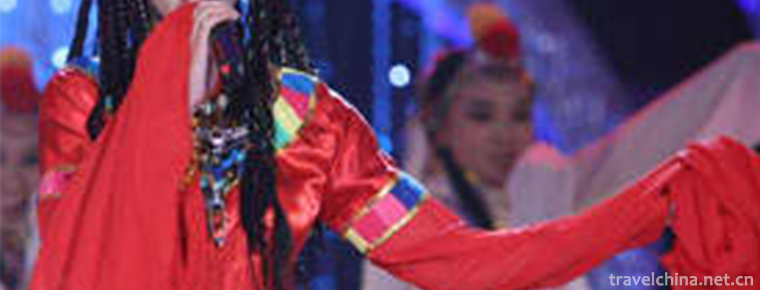
-
Leshan Giant Buddha
Located on the East Bank of Minjiang River in Leshan City.
Views: 165 Time 2018-10-13 -
Daqing Oilfield History Exhibition Hall
Daqing Oilfield History Exhibition Hall is the first original Memorial Hall in China with the theme of petroleum industry, and it is a cultural relic protection unit in Heilongjiang Province. .
Views: 155 Time 2019-01-07 -
Gudong Waterfall
Gudong Forest Waterfall Group Tourist Area is located at the foot of Butterfly Mountain - Lawn Road, Gudong Village, Dayuan Town, 8 kilometers away from Guilin City, on the other side of Lijiang Forei.
Views: 217 Time 2019-01-12 -
yuyuantan park
Yuyuantan Park, AAAA grade scenic spot, is located in Haidian District. East Gate is adjacent to Diaoyutai State Guest House; West to West Third Ring Road is separated from CCTV Tower; South Gate is n.
Views: 163 Time 2019-03-08 -
Changshan Cheerful Ballads
In Changshan, the custom of applauding when marrying and bridging a new house has been popular among the people since ancient times for the sake of luck. The content of applause for marriage.
Views: 380 Time 2019-04-16 -
Firing Techniques of Dangyangyu Twisted Tissue Porcelain
Dangyangyu Twisted Tissue Porcelain, a special product of Dangyangyu Village, Xiuwu County, Henan Province, is a product of China's National Geographic Indicators..
Views: 169 Time 2019-04-25 -
Laiwu Bangzi
Laiwu Bangzi, also known as Laiwu Bangzi, is a unique opera in China. It has a history of more than 200 years and is a wonderful flower in traditional Chinese local operas..
Views: 295 Time 2019-05-10 -
Gong and Drum Art
Gong and drum art can be roughly divided into Yunsheng Gong and drum, Zhongzhou big drum, Ezhou brand gong, Xiaohe Gong and drum, Hanggu flying gong, Changshan battle drum, Taiyuan Gong and drum, Liji.
Views: 369 Time 2019-05-15 -
Tongwei Opera
Tongwei Xiaoqu Opera is a kind of traditional Xiaoqu Opera popular in Tongwei County. In the Ming and Qing Dynasties, Tongwei folk artists absorbed various flavors of Longdong Daoqing, Wanwanwanqiang .
Views: 194 Time 2019-06-21 -
Lizhou ancient town
Lizhou ancient town is a big post station of the ancient Southern Silk Road, an ancient town of Liangshan Yi Autonomous Prefecture, and the place where the red army went through the long march..
Views: 191 Time 2020-10-16 -
Meishan Sports
In 2019, 45 games will be held and 30000 people will participate in the games. At the end of the year, there were 116 sports associations. By the end of the year, there were 1410 sports venues in the education system. Meishan post and telecommunication.
Views: 359 Time 2020-12-18
